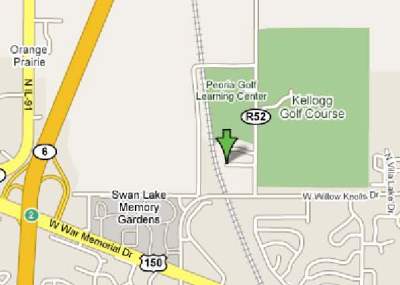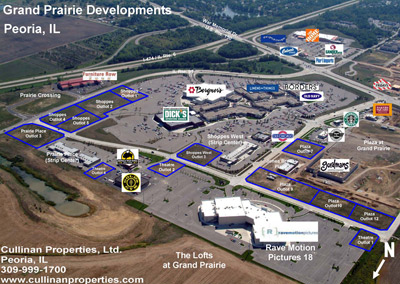Ladies and gentlemen, you have the floor. Speak your mind.
Daily Archives: December 12, 2007
A new kind of poverty
The city says that a new development at Radnor Road and Willow Knolls “meets all the qualifications of Section 4 of the [Enterprise Zone] Act” (20 ILCS 655). Really? One of the qualifications in Section 4 is “(1) An area is qualified to become an enterprise zone which […] (c) is a depressed area.” And just what is “a depressed area”?
20 ILCS 655/3(c) “Depressed Area” means an area in which pervasive poverty, unemployment and economic distress exist.
By the way, “pervasive” means “spreading widely throughout an area or a group of people,” according to the Oxford American Dictionary. So, let’s take a look at Radnor Road and Willow Knolls, shall we? Here it is on a map (courtesy of Google):

The development site is in that area just below the green arrow, bounded by Radnor to the east, Willow Knolls to the south, the Union Pacific rail line to the west, and Eagle Point Drive to the north. Here’s a house currently for sale on Eagle Point Drive:
Yes, the “pervasive poverty” in this area has depressed the listing price of this house (representative of houses in the area) to a paltry $264,900. Isn’t that awful? Too bad, too, because it’s right across from Kellogg Golf Course:

This is obviously where all the unemployed in the area loiter. You often see them sitting next to the greens with “will caddy for food” signs. They’re unemployed because of the “economic distress” of the area:

The Shoppes at Grand Prairie, 1.25 miles west
They’re also less than a mile from Sam’s Club, Willow Knolls 14 theater, and a plethora of relatively new development. We really should get together with some social service agencies and churches to work on caring for these poor, unemployed, economically distressed folks. The council is doing their part: they approved Enterprise Zone status at Tuesday’s meeting, 10-1 (Sandberg was the lone “no” vote).
Their reasoning? “Everybody’s doing it.” All over Illinois, they say, this is the way the Enterprise Zone is being used, so therefore, that’s also how we should use it. And if everyone else in Illinois were jumping off a bridge, then I suppose we would, too. The City’s economic development director Craig Hullinger also had this rationalization that he e-mailed to the council and also reiterated at the meeting:
There is some concern on the blogs about extending the Enterprise Zone to the new Horan development on Radnor.
This area is in the unincorporated County. They had proper zoning and sewer and water to build in the County, and they planned to do so.
By annexing them into the City and into the Enterprise Zone we give them a sales tax rebate on taxes for building material that we would not have gotten anyway if they had stayed unincorporated.
And we get a lifetime of property, sales, and utility tax from the development that would never have come to the City. And logical expansion of the city boundaries.
In other words, the ends justify the means.
Here’s the problem with this logic: it doesn’t tell the whole story. It’s a half-truth. Because the trade-off is less Enterprise Zone area that could be used to help legitimately depressed areas of the city, more land mass for the city to support with public works and public safety services which are already stretched thin, and an exacerbation of developer-welfare and the entitlement mentality among developers.
I think it’s interesting that the district councilmen in the first, second, and third districts voted for this measure even though it incentivizes businesses to move out of their districts and into the growth areas of the city. Even though it means less area that they could use to try to attract businesses to (and retain businesses in) depressed areas in their districts.
I also take issue with the idea that this development “would never have come to the City.” Never? Never is a long time. I think it’s most likely that growth in this area would have encircled this development within a few years, and the city would have annexed it anyway. I also think that the city probably has other tools it could have used to woo it into the city without further bastardizing the Enterprise Zone.
